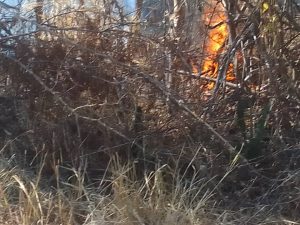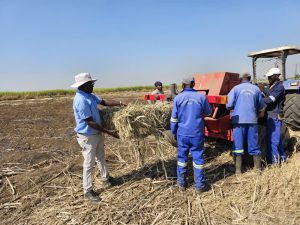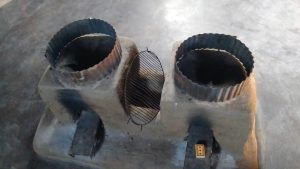Beatific Gumbwanda
A total of 18 504 000kg of fertilisers is needed to support Zimbabwe’s sugarcane production in Chiredzi district each farming season, translating to a significant part of the country’s environmental management challenges.
The South Eastern Lowveld of Zimbabwe has excellent topography, soils and climate as well as water storage and conveyancing infrastructure for irrigation.
Some 51 400 hectares of land in Chiredzi alone is under sugarcane, with multi-national sugar producer Tongaat Hulett holding 26 986 hectares of that.
A total of 1 100 smallholder farmers have for long been operating 20 414 hectares, but that has since increased after government and Tongaat Hulett partnered to add 4000 hectares under the Kilimanjaro Project for the benefit of new smallholder farmers.
Ethanol producer Greenfuel operates 9500 hectares of sugarcane land in the neighbouring Chipinge district but the company hopes to extend that 40 500 hectares.
Great Zimbabwe University (GZU) lecturer and agriculture expert Professor Munashe Shoko, said in order to maximise yields, a farmer needed to apply three different types of fertilizers namely Single Super Phosphate (SSP) at 100kg/ha, Murate of Potash (MOP) which needs 60kg/ha, and Urea (46 percent Nitrogen) which needs 200kg/ha. He said urea could be substituted by Ammonium Nitrate (AN), which has 33 percent of nitrogen.
These fertilizers produce greenhouse gases after farmers have applied them, with crops taking only an average of about half of the nitrogen from fertilizers.Much of the applied fertilizer runs off into waterways, or gets broken down by microbes in the soil, releasing the potent greenhouse gas nitrous oxide into the atmosphere.
Although nitrous oxide accounts for only a small fraction of worldwide greenhouse gas emissions,pound for pound, nitrous oxide warms the planet 300 times as much as carbon dioxide, research conducted by experts has shown.
Dr Washington Mutatu, an agronomist with the Zimbabwe Sugarcane Association Experiment Station (ZSAES) told EnviroPress that extensive use of these fertilisers had a negative impact on the environment but there was currently no much choice.
He said failure to apply enough fertilizer would have devastating impact on yields, and ultimately on food security and the economy.
“Excess fertilizer is very dangerous to the environment and can cause eutrophication. Leaching may also happen depending on the amount of rainfall received while it may also affect crops yields if too little of fertilizer is applied,” said Dr Mutatu.
Anna Brazier, a climate change researcher, said fertilizers indeed had an impact on the environment and on climate.
She however warned that climate change was a global phenomenon, where greenhouse gases spread across the whole planet regardless of where they are emitted.
“Although everything you say about fertilisers and climate change is true, you must not forget that climate change is a global phenomenon. So greenhouse gases go into the atmosphere and spread into the global atmosphere and spread across the whole planet. They don’t just affect the place where they are released.
“So if Zimbabwe was to stop all of its greenhouse gas emissions, we would still be affected by climate change because of all other countries who are emitting greenhouse gases,” said Brazier.
She said it was important for Zimbabwe to explore alternatives to chemical fertilizers as part of global effort to cut emissions
“It is still very important for Zimbabwe to stop making and using fertilizers because we are all part of a global effort to cut emissions. That is why they have these big COP meetings to try to get everyone to agree to stop,” added Brazier.
Scientists have proffered alternatives for AN fertilizers including the use of compost manure as well as the planting of leguminous crops.
This report was made possible through support from WAN-IFRA Media Freedom’s Strengthening African Media Programme: Climate Change and Environmental Reporting. Views expressed here do not belong to WAN-IFRA.






